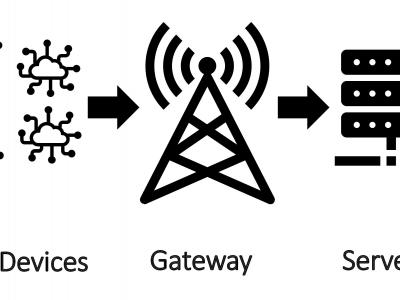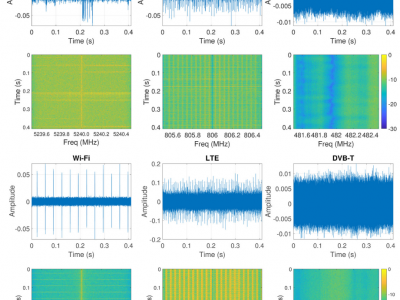Wireless Networking

AirForce Security Dataset (AFSD) that offers many advantages over the AWID dataset for detecting Evil Twin attacks. The AFSD dataset was created through a carefully planned and executed simulation of an Evil Twin attack considering the characteristics of both the attacks and the WiFi environment.
- Categories:
 523 Views
523 ViewsIoT has a significant role in smart campus. LoRaWAN is an emerging technology that enables serving hundreds of IoT devices. In this dataset, we present a the data results from the LoRa communication model between the devices and the gateway and between the gateway and the processing server. In addition, we present the physical readings sensed by the LoRa devices. This dataset is very rich and can be used in many applications, such as time-series forecasting, number of people prediction, and veryfing spatial correlation algorithms.
- Categories:
 968 Views
968 ViewsThis dataset contains CIRs from 23 different positions in an industrial environment, as illustrated in the picture.
These originate from a tag-anchor pair configured with two-way-ranging for distance estimations. In total, 21 anchors are placed in the area, allowing both Line-of-Sight (LOS) and Non-LOS (NLOS) signal propagation, as illustrated in the picture.
The aim during the data collection proces was to measure UWB ranging errors in (N)LOS environments. As such, the ground truth of each position was measured using a laser.
- Categories:
 716 Views
716 ViewsThis dataset contains IQ samples captured over-the-air in six different locations in Gent, Belgium (UZ, Reep, Rabot, Merelbeke, iGent and Gentbrugge). Each location has unique data characteristics (e.g. different signal strength and noise levels) due to different physical signal propagations. As an example, these differences in two locations (top two and bottom two rows) are displayed on the spectrograms.
- Categories:
 1101 Views
1101 ViewsWe provide a dataset with IQ signals captured from multiple Sub-GHz technologies. Specifically, the dataset targets wireless technology recognition (machine learning) algorithms for enabling cognitive wireless networks. The Sub-GHz technologies include Sigfox, LoRA, IEEE 802.15.4g, IEEE 802.15.4 SUN-OFDM and IEEE 802.11ah. Additionally, we added a noise signal class for allowing detection of signal absence.
- Categories:
 941 Views
941 Views
OFDM autoencoder based on deep learning for vehicular networks
- Categories:
 43 Views
43 ViewsWe conducted a massive MIMO channel measurement experiment in an indoor setting on the Rice University campus. We used a 64-antenna RENEW software-defined massive MIMO base station and seven software-defined clients in a large open area inside a building hall. We fixed six of the clients in a circle,15maway from the base station. The seventh node was placed on a robot where we moved the robot across the hall starting from the location of the first client to the last. We moved the robot along the path with different speeds, i.e. with0.5m/s,1m/s, and2m/s.
- Categories:
 352 Views
352 Views
In-building wireless solutions, such as distributed antenna systems and small cells, appear as alternatives for mobile operators to provide coverage, capacity and data traffic to subscribers in indoor scenarios where service from the macro network is poor, due to RF propagation losses, capacity limitations and signal interference. Each indoor scenario presents unique challenges in terms of throughput and spectral efficiency.
- Categories:
 26 Views
26 ViewsThe dataset Provides S-parameter measurements of two ISO/ICE 14443-1 Coils with series capacitance compensation at 13.56 MHz under different spatial configurations of vertical and horizontal misalignment, inter-coil distance, and azimuthal tilt as indicated in the image. The dataset can be used for training of neural networks controlling adaptive impedance matching networks.
- Categories:
 239 Views
239 Views





